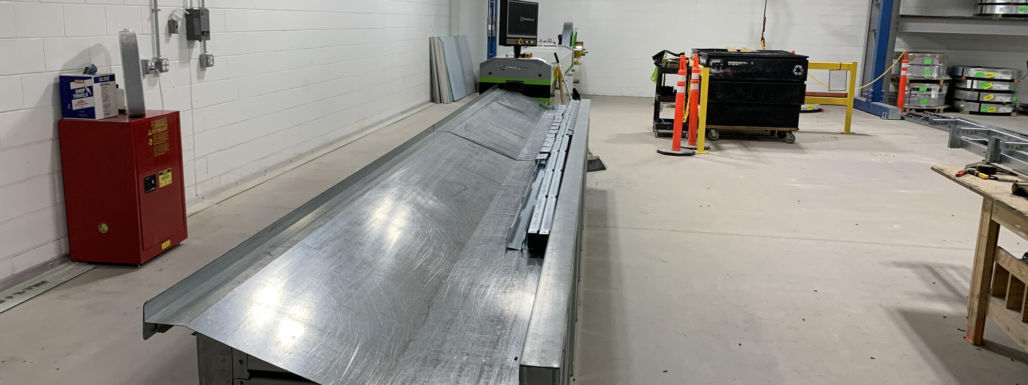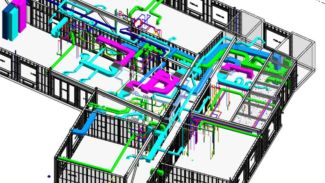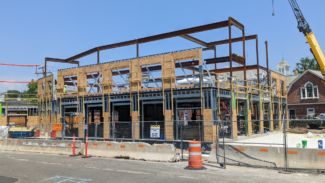Automated cold-formed steel (CFS) stud fabrication machines or computer numerical controlled (CNC) machines are important pieces of equipment, but the type of third-party software your engineer uses with the machine can make or break a project.
In this guide, we’ll explain the importance of your engineer’s cold-formed steel software choice — plus, we’ll provide details on our top choice, MWF Pro Metal by StrucSoft Solutions.
How Does Cold-Formed Steel Software Work?
The Importance of Choosing Cold-Formed Steel Software
Cold-Formed Steel Software Recommendations
The Benefits of MWF Framer
How Does Cold-Formed Steel Software Work?
FRAMECAD, Howick Ltd., Scottsdale, Pinnacle, Knudson, and SFS International are some of the most popular manufacturers of automated CFS stud CNC machines, which can roll standard and custom steel shapes. There are several other stud rolling machine manufacturers that we do not mean to exclude from this article.
In order to produce the steel stud shapes needed from the machine, you need to get the data from the computer model to the machines. We recommend starting with Autodesk’s Revit® software, but there are several other Building Information Modeling (BIM) software packages available (e.g. MicroStation, Tekla, and Vectorworks). However, the base software alone does not lend itself to providing a model in a format ready for most CNC machines.
Third-party software add-ons allow engineers to create a CNC-ready file. We enjoy using Structsoft’s MWF Pro Metal to modify the framing into workable panel profiles.
These profiles contain preferences for each framing manufacturer. Preferences might include: gap distance between panels, corner stud orientation, or even overall max panel dimensions for shipping constraints.
Ultimately, the Revit model needs to be modified into a manner that produces a project with both the information on the panels and the individual member sizes of those panels. Universally, these software packages should produce an International Foundation Class, or “IFC” file, which contains data that can be read across multiple platforms.
These files contain the raw data from the BIM project. While these files are “universal,” the equipment that is used to read these files is not.
It is often the case that an additional piece of software is needed to turn this data into a machine language. Comma Separated Values (CSV) files — or *.csv files — are usually the file types/machines read for the CNC machines. To get from an IFC file to a CSV file, the data has to be translated via another piece of software. This software has to be specifically configured for the machine type being used.
For example, Structsoft offers ONYX CNC software that works with several of the top manufacturers but requires a different configuration package for FRAMECAD and Scottsdale machines. It is rare that the CFS engineer is the user or owner of this software because of this specificity. As such, it is incumbent on the CNC machine owners and operators to have staff capable of using this software.
The Importance of Choosing Cold-Formed Steel Software
It’s crucial to ensure the engineer or drafter you are hiring has selected a software package that works well with FRAMECAD, Howick, Scottsdale, or any other brand of CFS stud fabrication CNC machines. Failing to choose the right software may result in the need to re-code or completely re-model the designs using a different, more compatible software. All of this will likely result in project delays and increased costs. Owning a CNC machine and hiring a structural engineer who can provide you with a BIM model are only two legs of the stool for success. The third-party add-on software is the third leg and making sure they all work seamlessly together is the bond.
Since CFS stud fabrication CNC machines and related third-party software are still evolving, it may be hard to know where to begin, especially since there are numerous options. But doing your research and consulting with experts like Iron Engineering will help.
Cold-Formed Steel Software Recommendations
If you have a CFS stud fabrication CNC machine, it’s important to remember that not every engineer uses the same software. And not all third-party software packages will communicate cleanly with the machine, which is why we recommend a test run before you begin.
While FRAMECAD is marketed as working with many of the Revit add-ons, our experience is that MWF Pro Metal by StrucSoft Solutions appears most compatible. We have also worked with other add-ons, but those experiences have not produced the same high levels of success.
Another option for a BIM software package is Vertex BD, which is a stand-alone product that doesn’t need Revit to produce panel drawings. This works well for smaller, simple projects or if the design team didn’t produce a Revit file.
The Benefits of MWF Pro Metal
This innovative software solution can create both 3D models and panel tickets.
MWF Pro Metal with Autodesk’s Revit BIM software allows you to easily coordinate with the mechanical systems on a project and create a model of shop and/or panel ticket drawings in Revit.
Our recent experience on two projects in which MWF Framer was critical — KindCare Assisted Living, a senior living facility in Bristol, Conn., and the Corbin District, a multi-building project featuring a mix of residential units, offices, restaurants, and retail space in Darien, Conn. In both cases, MWF’s software solution helped us handle any issues without delay.
If you are a CFS panelizer or fabricator, your software choice matters — and can make all the difference between an on-time, on-budget project and one that incurs frustration and costly delays.
Questions About Cold-Formed Steel Software?
If you have questions about cold-formed steel software, or you’re looking for a quote for your next project, please contact us today. We look forward to answering your questions and learning how we can help.


